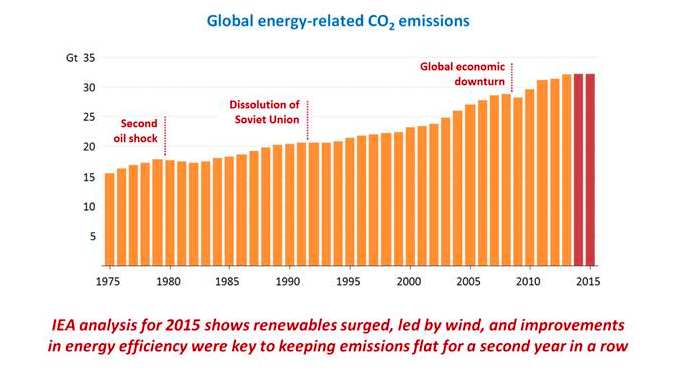-
Tips for becoming a good boxer - November 6, 2020
-
7 expert tips for making your hens night a memorable one - November 6, 2020
-
5 reasons to host your Christmas party on a cruise boat - November 6, 2020
-
What to do when you’re charged with a crime - November 6, 2020
-
Should you get one or multiple dogs? Here’s all you need to know - November 3, 2020
-
A Guide: How to Build Your Very Own Magic Mirror - February 14, 2019
-
Our Top Inspirational Baseball Stars - November 24, 2018
-
Five Tech Tools That Will Help You Turn Your Blog into a Business - November 24, 2018
-
How to Indulge on Vacation without Expanding Your Waist - November 9, 2018
-
5 Strategies for Businesses to Appeal to Today’s Increasingly Mobile-Crazed Customers - November 9, 2018
China CO2 Emissions Marks Largest Decrease in World
The global surge in renewable energy deployment has been credited for greenhouse gas emissions remaining flat for the second year running, according to the International Energy Agency.
Advertisement
IEA executive director Fatih Birol said: “The new figures confirm last year’s surprising but welcome news [that] we now have seen two straight years of greenhouse gas emissions decoupling from economic growth”.
The flat growth in emissions was largely driven by the world’s largest emitters, China and the United States, posting declines in energy-related carbon emissions in 2015.
Emissions need to fall sharply globally, not just say flat, if the goals of the worldwide climate change accord – agreed by almost 200 countries in Paris in December – are to be met. The new pact aims to stop global temperatures rising more than 2C from pre-industrial times.
Electricity generated by renewable sources played a critical role, having accounted for around 90% of new electricity generation in 2015.
However, these declines were offset by increasing emissions in most other Asian developing economies and the Middle East, said the IEA.
In the 40 years which IEA has been sourcing information on emissions, this marks the first time that the correlation between emissions and economic growth have been severed.
Three of those were in times of global weakness, such as the second oil shock of the early 1980s, the collapse of the Soviet Union in 1990s and the Global Financial Crisis in 2009. However, the latest levelling in emissions comes during a period of economic growth, with the International Monetary Fund saying global GDP grew by 3.4% in 2014 and 3.1% in 2015. But the decoupling of economies and emissions is a positive step towards a projected 2020 emissions peak. The 2-degree goal was enshrined in the Paris agreement. This long-term goal may become dependent on Scotland’s “vibrant renewable sector” and “bold policy approaches”, which has been praised by the Committee on Climate Change (CCC).
Launching the 2015 edition of its World Energy Outlook last November, the IEA said there were signs of a global energy transition, with low-carbon technologies expected to generate nearly half of the world’s electricity by 2040. No other reproduction or distribution is permitted without prior written consent. The pace of China’s economic growth has also fallen to its slowest in more than 20 years. “Now we are going to see less coal, but more renewable energies, more natural gas and more nuclear power”, he indicated. Energy-related carbon pollution fell in both countries in 2015.
Advertisement
The clean energy industry expects to build on its recent successes. Coal’s share of China’s electricity market has declined from 80 to 70 percent in just over four years.




























